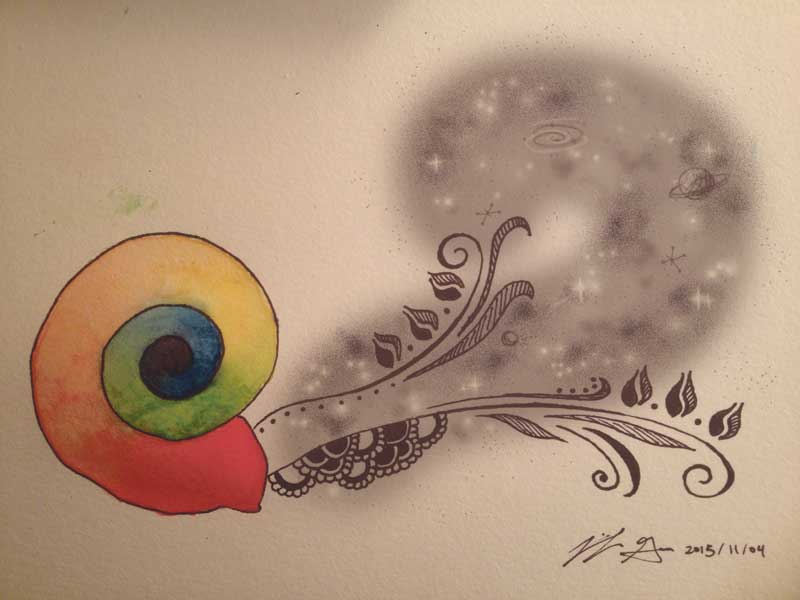This article is not intended to be a 101 introduction to asexuality, and assumes some level of background knowledge. The “I” is used to reflect the opinion/experience of one or both authors when addressing (a)sexuality, queerness, gender, and other Western social constructs.
I feel removed from a general population that seems to categorize sexuality as, above all else, a natural identity. I find this categorization dangerous, and especially isolating to those of us who fall into a fluctuating continuum of demisexual, graysexual, and asexual identities.
Common discourse defines an asexual person as someone who does not experience sexual attraction, in opposition to those who do. Naturalizing the desire for sex, i.e. categorizing sexuality as inherent within us, as an identity not influenced by experience, or as something static, prevents many from realizing or addressing (a)sexuality as something intrinsically mutable. The normalization of sex as a presupposed cornerstone of sexuality implies as well that one’s attractions, either sexual or romantic, correlate directly with one’s (a)sexual life, which is often untrue and serves only to negate a diverse range of personal experiences. And thus, it is impossible to equate any sexual act with any sexual identity.
Through the normalization of sex and sexual desire, asexuality becomes abnormal, presented as external to sexuality. Simultaneously, though, designating it as a sexuality maintains it as a subgroup within the larger category. There exists a tension between asexuality as an alternative to sexuality and asexuality as included within the concept of sexuality, partially due to the linguistic morphology of the terms – sexual and asexual, the “a” working as an inherently othering force.

The many varying definitions of asexuality that people offer and abide by amplify this tension. I find that plurality beneficial, because any one definition seems to prove insufficient and confining. As such, it often feels to me like there is no appropriate way to integrate asexuality into a definition of sexuality. This relates back to the fact that sexuality itself depends on static notions of gender and biological sex. If we recognize both gender and biological sex as unreal, undefinable, uncategorizable, and unreliable identifiers, we can also realize the similarly constructed and imposing nature of sexuality.
Partly due to its categorization as “non-sexual” in nature or as an alternative to sexuality, asexuality has been historically excluded from the queer community. For instance, on a spectrum of sexual queerness, where do heteroromantic asexual folks find themselves? How do sexual and romantic attractions intersect, and what relationships do these identifiers maintain toward queerness? I would argue that these questions can only be resolved on a personal or individual basis, but that they do draw attention, on a larger scale, to the ways in which queerness most often involves sexual life as a criteria for inclusion.
As such, asexuality is chronically underrepresented, and, when discussed, it is conceptualized largely in terms of negation, or in terms of lack, often disregarding its emancipatory and healing potential. Asexuality can be framed as positive in the sense that it may offer a way for some of us to negotiate past and current trauma. While many asexual folks do not locate their identity in trauma, for the folks who do, an acceptance of asexuality becomes liberating. As such, it is essential that asexual communities and their allies foster spaces that decentralize sexual lives, and debunk sex and sexual desire as crucial to selfhood.
Indeed, reflecting on the consequences of the social constructs of gender and sexuality and mainstream discourses around these topics, we should consider how they shape us. We should emphasize the fact that, in order to move toward emancipation and well-being, we need to provide our many communities with safer spaces to heal. Oftentimes, the best spaces for healing aren’t bars or parties with alcohol; as queer social gatherings mostly revolve around such places and events, they de facto exclude some of us. Other queer spaces such as workshops and group discussions can be emotionally draining and fail to fulfill a need for friendship and community belonging. In creating spaces, I think we first need to observe the dynamics that exist in these scenes so as to take action toward achieving true inclusivity and solidarity.
Decentralizing sex within the queer community will welcome a broader range of folks and facilitate the creation of safer spaces. Moreover, while sexuality itself is limiting as a social construct, I acknowledge that it is often not possible to reject an entire conceptual framework. Finding ways to represent and verbalize our identities within this framework can be empowering and often necessary for those who are perpetually excluded from mainstream discourses.
We, as grassroots communities, must rework the prescribed definitions of (a)sexuality to acknowledge its inherent mutability over time and space, as well as its emancipatory and healing power. Asexuality must be validated and normalized, especially in queer spaces, but we cannot forget to question the social constructs that overarchingly constitute and bind identity. Indeed, if we hope to liberate ourselves from a (cis)sexist (hetero)patriarchal system, we must break the constraints of identity.

